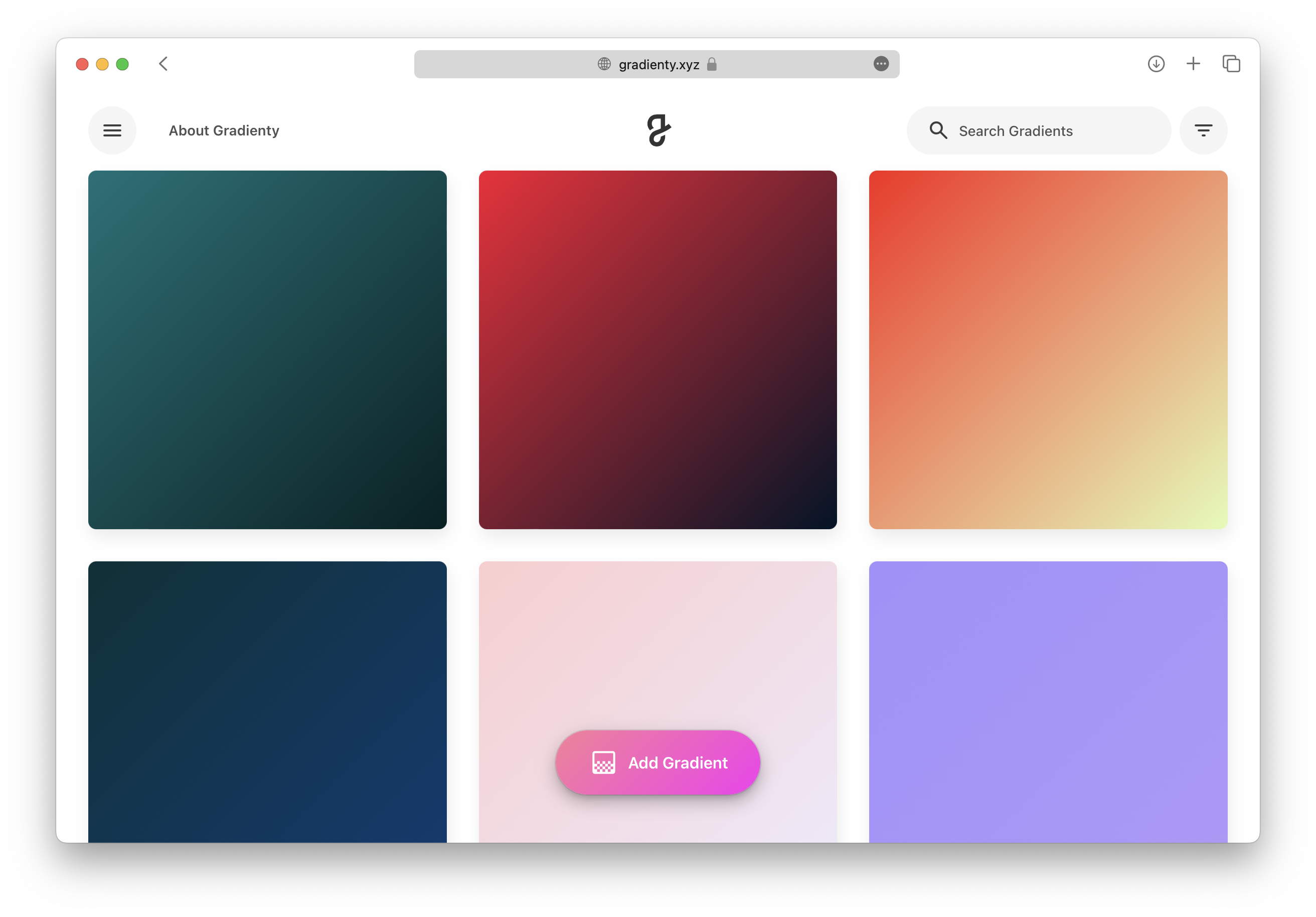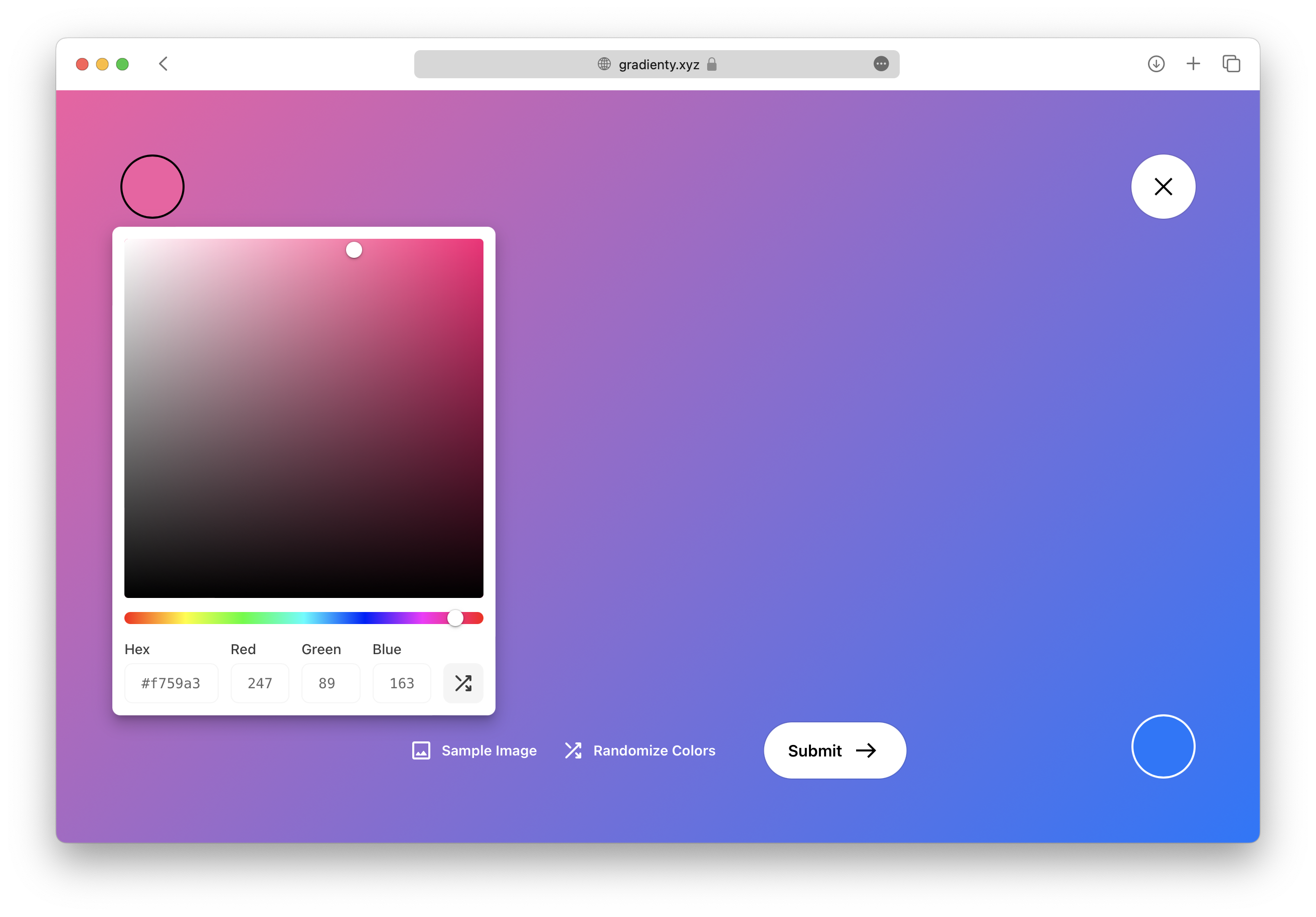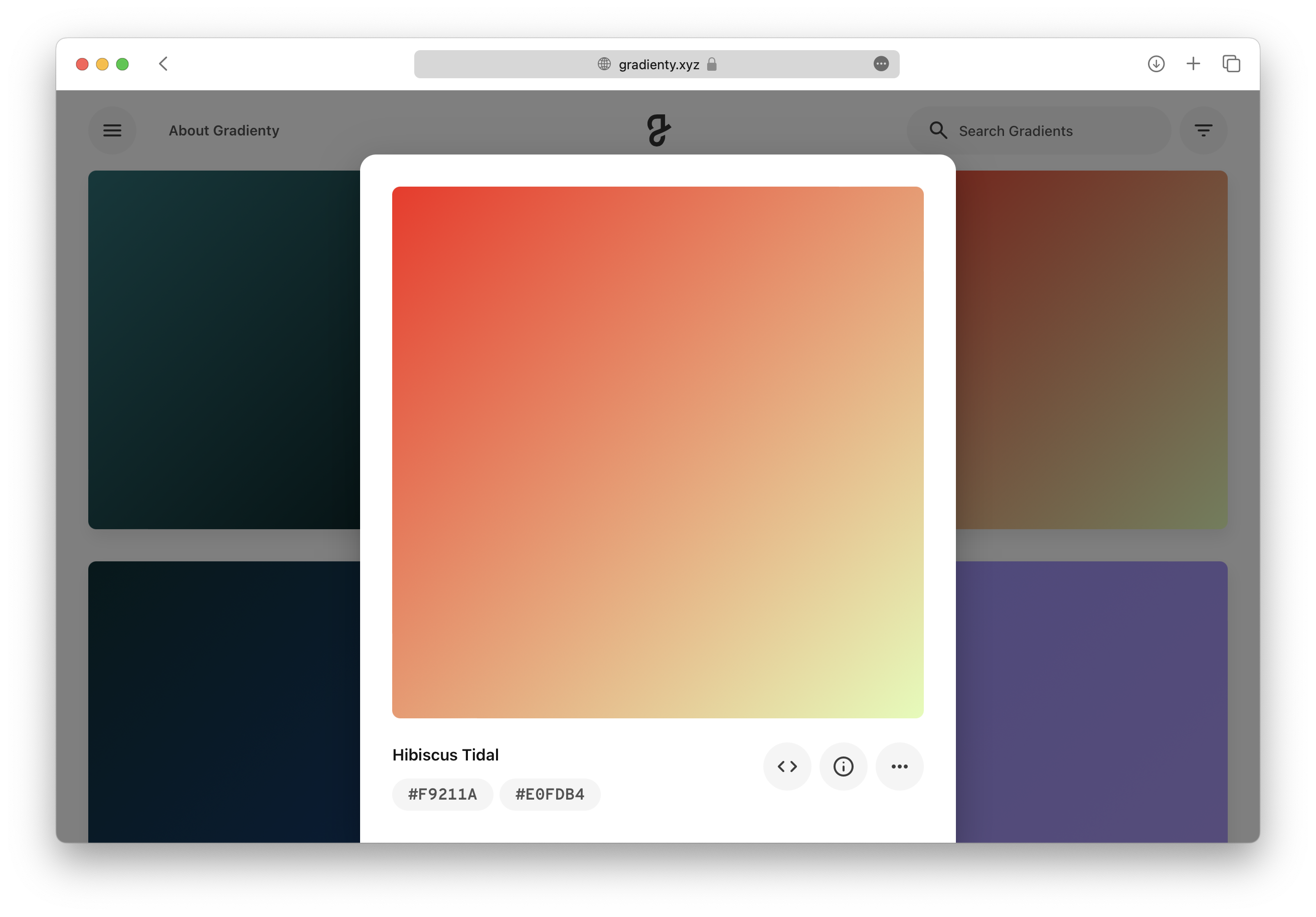Gradienty
Gradienty is a giant database of gradients, created by visitors and AI, with deep search capabilities and tools to export gradients for creative projects.
First conceived as a gallery of computer-generated gradients, early attempts at generating gradients purely by AI produced some truly awful gradients. The AI would need training using two key inputs: user-generated gradients and a concept of what a 'nice' gradient is.

Creating a tool for user-generated gradients would be easy enough. The challenge would be understanding what a 'nice' gradient is, moreover, doing this without requiring tedious manual labour.

The ideal solution would be a way for visitors to 'like' or 'favourite' existing 'nice' gradients and use popular gradients as the basis of a 'nice' gradient. I chose to use Tumblr for its flexible API – a gradient could be posted to Tumblr then checked on after a period of time to see users' reactions to it (likes, reblogs etc.)
Along with Tumblr activity, I realised I could also use views and downloads (as well as Figma usage, see below). Now the AI knows what good gradients are.

Visitors can search, sort and filter the gradients in a variety of ways. Along with colour hex codes, the search field accepts an enormous range of colour names. Users can also find gradients like another by adding 'like' at the beginning of their query.
Once a user finds the perfect gradient, they can copy the colour values or complete CSS code, download it or create a brand new gradient using the original as reference.

A new gradient is published every hour of the day and, at the time of writing, Gradienty's AI and users have generated a combined total of 50 thousand unique gradients.
Gradienty is full of tiny details like subtle transitions and animations. My favourite is the browser favicon that changes to match the open gradient – really useful if you open lots of gradients in different tabs.
Gradienty Figma plugin
To support Gradienty's amazing creative users, simply offering options to download or copy gradients wasn't enough. To truly empower these users, I developed a Figma plugin that streamlines the importing of gradients into a Figma file. Gradients are filtered to the most highly-engaged with, but searching will expose the perfect gradient for a project. Simply click the gradient and it's instantly applied to the selected layer.